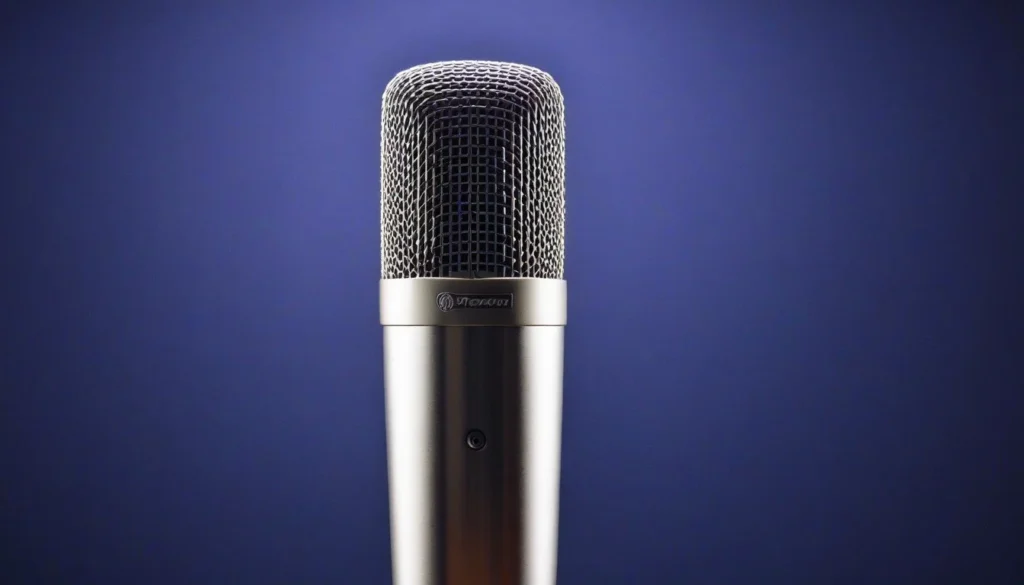
4 Types of Microphone Explained
Table of Contents
4 Types of Microphone Explained
The unsung heroes of the audio world are microphones; they capture the subtleties of sound and create an auditory symphony for us. Whether you’re a novice podcaster or an experienced audio expert, knowing the different kinds of microphones is crucial to getting the ideal quality. We’ll explore the various aspects of the microphone world and identify the distinctive characteristics that set each kind apart.
What are the 4 types of microphones?
4 Types of Microphone Explained

Dynamic Microphone
The workhorses of the audio industry, dynamic microphones are renowned for their robustness and adaptability. These heavy-duty microphones serve as the solid foundation for both intense live recordings and recording sessions. Dynamic microphones are designed to withstand high sound pressure levels with ease and are excellent at capturing the unadulterated power of instruments such as drums and guitar amps.
Their straightforward yet efficient construction consists of a diaphragm fastened to a wire coil in a magnetic field. The diaphragm vibrates in response to sound waves, causing a current to flow through the coil and converting acoustic energy into an electrical signal. Dynamic microphones are still a popular option for artists and sound professionals all over the world because of their reputation for dependability and aptitude in loud settings.
The Workhorses: Dynamic microphones are perfect for a variety of applications since they are strong and adaptable. They are ideal for recording loud instruments like drums and guitar amps and for live performances due to their robustness and capacity to withstand high sound pressure levels (SPL).
Dynamic microphones operate by placing a diaphragm in the magnetic field of a magnet and attaching it to a coil of wire. The diaphragm vibrates in response to sound waves, creating a current in the coil that is then transformed into an electrical signal.
- Popular Models:
- Shure SM58
- Shure SM57
- Sennheiser MD 421 II
Condenser Microphone
Condenser mics are renowned for their sensitivity and capacity to pick up even minute details. They are excellent for recording vocalists, acoustic instruments, and complex noises in studio environments. Condensers need a power source, which is typically provided by a battery or phantom power from a mixer or audio interface, in contrast to dynamic microphones.
Condenser microphones function by using a diaphragm that is positioned near to a backplate. When sound waves strike the electrically charged diaphragm, the distance between it and the backplate changes, producing an electrical signal.
- Popular Models:
- Audio-Technica AT2020
- Neumann U87
- Rode NT1-A
Ribbon Microphone
Vintage Elegance: The warm, velvety sound of ribbon microphones is highly regarded. Although they might not be as popular as condenser or dynamic microphones, many producers treasure the distinctive sonic quality they provide. Ribbon microphones work best in controlled studio settings because they are sensitive and easily damaged by excessive SPL.
Ribbon microphones operate by sandwiching a thin metal strip—known as the ribbon—between a magnet’s poles. The ribbon moves within the magnetic field as sound waves strike it, producing an electrical signal.
- Popular Models:
- Royer R-121
- AEA R84
- Coles 4038
USB Microphones
Plug & Play: Due to their ease of use and portability, USB microphones have become more and more popular. These microphones are ideal for content creators and podcasters because they can be connected straight to a computer’s USB connection, doing away with the need for extra audio interfaces. There are two types available: condenser and dynamic.
- Popular Models:
- Blue Yeti
- Audio-Technica ATR2100x-USB
- Rode NT-USB
Conclusion {4 Types of Microphone }
Every kind of microphone has a special place in the enormous symphony of sound, adding its own sound to the overall arrangement. Selecting the ideal microphone is essential to capturing the spirit of your sound, whether you’re slaying it live, perfecting your vocal take in the studio, or interacting with listeners via a podcast. Explore the subtleties of microphones and let the speech, music, or background noise come to life in all its splendor.
Check out this blog related to this blog
Check our featured blog
Microphone Placement and Techniques
How Do Musicians Make Money?

How Do Musicians Make Money? Discover the most important revenue streams for musicians: live performances and tours, music sales and streaming, royalties and licensing, and merchandising and brand collaborations. Discover how various revenue streams influence a musician’s financial success and audience involvement in today’s music industry. Understand the value of strategic planning and personal branding…
The Elements of Music Theory: 7 Comprehensive Guide

What is the theory of the music? Music theory is the study of musical practices and possibilities. Its fundamental purpose is to provide a framework for understanding, composing, and evaluating musical works. Music theory allows artists and aficionados to understand the various structures and ideas that drive musical compositions ranging from classical symphonies to modern…
What are The 7 Musical Notes?

What are the 7 musical notes? Learn about the importance of musical notes and the concept of the C major scale. Explore how musical notes are the foundation of music theory and composition, and how they allow musicians to communicate and notate their ideas. Discover the relationship between different notes and how they create melodies…




Leave a Reply